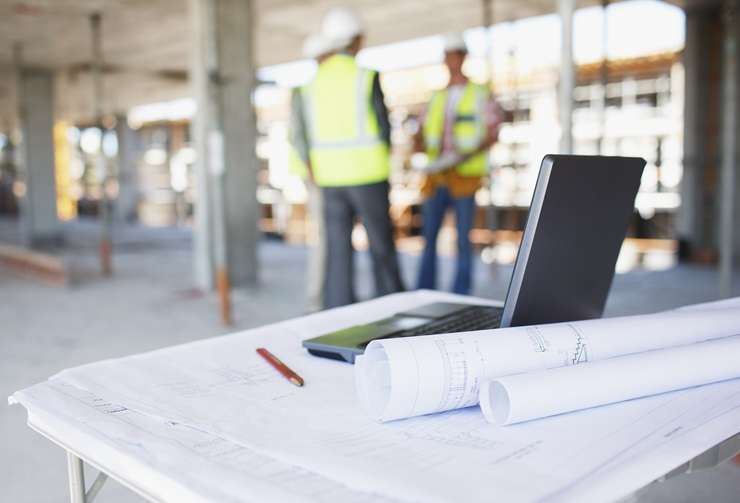Building a brand new home is as Kiwi as jelly tips and jandals. It can be a daunting challenge for a newbie, but the rewards can be priceless – a home that meets their specs and has that crisp new smell and feel when they move in.
If you’re considering building a new home, there will be countless decisions you’ll need to make and some big questions worth careful consideration:
- Should you design your own home or buy?
- Are house and land packages the best option for your budget?
Start your property search
- What are the benefits of hiring your own architect, builder or working with a group home builder?
- Should you buy and build in a rural location or in an inner-city suburb?
- How long do you have to spend on the project and how much can you afford to spend?
Answers to the above will influence the type of home you end up with.
Some of the pros and cons to building a brand new home include:
Pros: It is a home tailored to the buyer’s tastes. A brand new home is often more sustainable with better energy efficiency. It will come with a modern design. Because it’s brand new it will have a 12-month defect repair period and a 10-year structural warranty. The home will cost less to maintain for 7-10 years.
Cons: It takes time to build and cost overruns can happen.
Types of new builds
There are four main ways to build a new home: off the plan, house and land package, design and build, or remove and rebuild/subdivide.
Off the plan: Off the plan homes including townhouses and apartments are sold before they are built.
The builder or developer owns the land and offers to sell it with a fixed price build of a house according to plans. Group builders such as Classic Builders operate in this market.

Off the plan purchases allow you to buy an apartment or house before it is built. Photo / Getty Images
Design and build: People may prefer to buy a section, then have a home designed to their specific requirements to get a unique home that suits their lifestyle and design preferences. The homeowner will usually have plans drawn up by an architect or draughtsperson, or by a group build company that employs or works with designers. The architect or a project manager will manage the build typically.
Remove and rebuild/subdivide: It is essentially a design and build, but with the homeowner working with a builder, planner, surveyor or a group builder on the removal and subdivision process.
Consents
All new homes require building consent. Some homes will also require resource consent. The consents may be part of the package when working with a group build company or architect. For build only contracts the homeowner might need to manage this process with their building consultant such as an architect, planner, or surveyor.
Get out there and look
Even if buyers think they know 100% what they’re looking to achieve, it’s worth getting out and visiting as many new homes as possible.
Check out display homes, new builds that are on the market, and if possible other homes built in the past five years by local builders and architects.
Buyers should go to home shows, and build and design centres such as Residium in Auckland and the Architecture & Design Library in Wanaka , where latest trends and innovations are showcased.
Keep a scrapbook of ideas to share with the architect or group builder.

Houses under construction. Photo / Getty Images
When visiting homes, buyers should take good note of the floor plans and living spaces and consider what works and what doesn’t. They should also think about the lighting, room flow, storage, and privacy to get a feel for what they like and don’t like.
Buyers should also take photos and measurements and ask the marketing staff, sales team or real estate agents for details of everything from colours and products used to the names of designers and builders.
Home styles
Whether they are buying off the plan, a house and land package or a custom-designed home, buyers also have choices in home styles.
Apartments: Vertical living has taken off in New Zealand with first-home buyers, downsizers and investors all looking at apartments. Most brand new apartments are sold off the plan. The advantages of apartments are that they often cost less than an equivalent sized home, are ‘lock up and leave’, and the maintenance is handled by a body corporate that all homeowners pay levies to. Apartments are often situated around town centres with good public transport links and amenities.
Terraced homes: New build terraces are becoming increasingly popular across New Zealand. Terraces are a great opportunity for busy individuals. Typically the price of a home is governed by the land beneath it. With three, four, or more townhouses on the same section the entry point is lowered for buyers.
Townhouses: These are also designed with low maintenance in mind. That’s great for buyers who don’t want to spend their weekends mowing lawns. Some even have body corporates that take care of external maintenance and gardening. Questions to consider when buying a townhouse include the number of levels. Younger buyers may be happy to climb stairs, while older buyers may prefer two levels. Internal lifts are growing in popularity.
Standalone homes: These are the traditional Pavlova Paradise style detached home on a section. In the past that was a quarter-acre section, however sections tend to be smaller in the 2020s.
>> Next steps: The OneRoof home building guide part 2 - how much does it cost?
* This article was created in partnership with Classic Builders

















































































